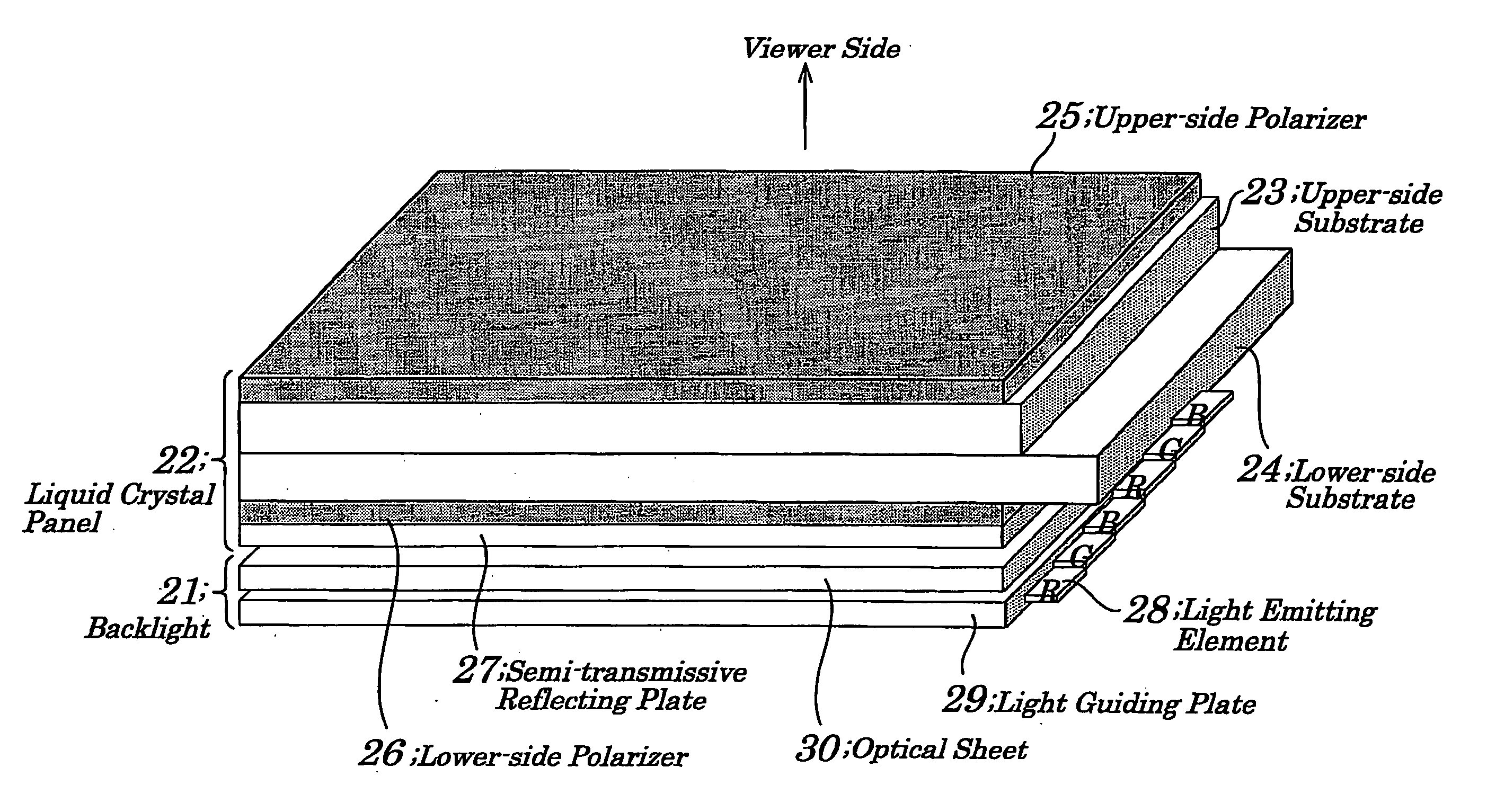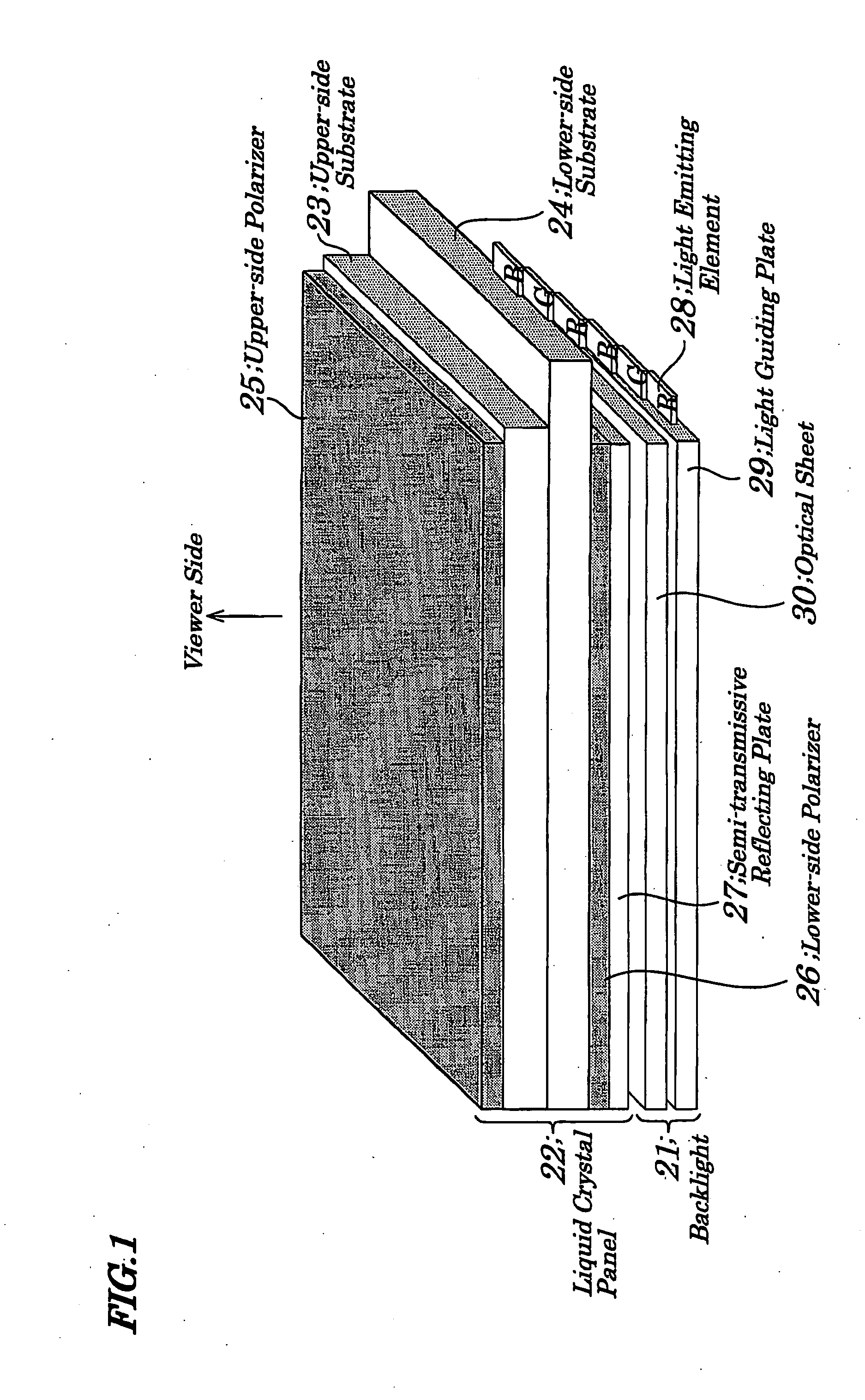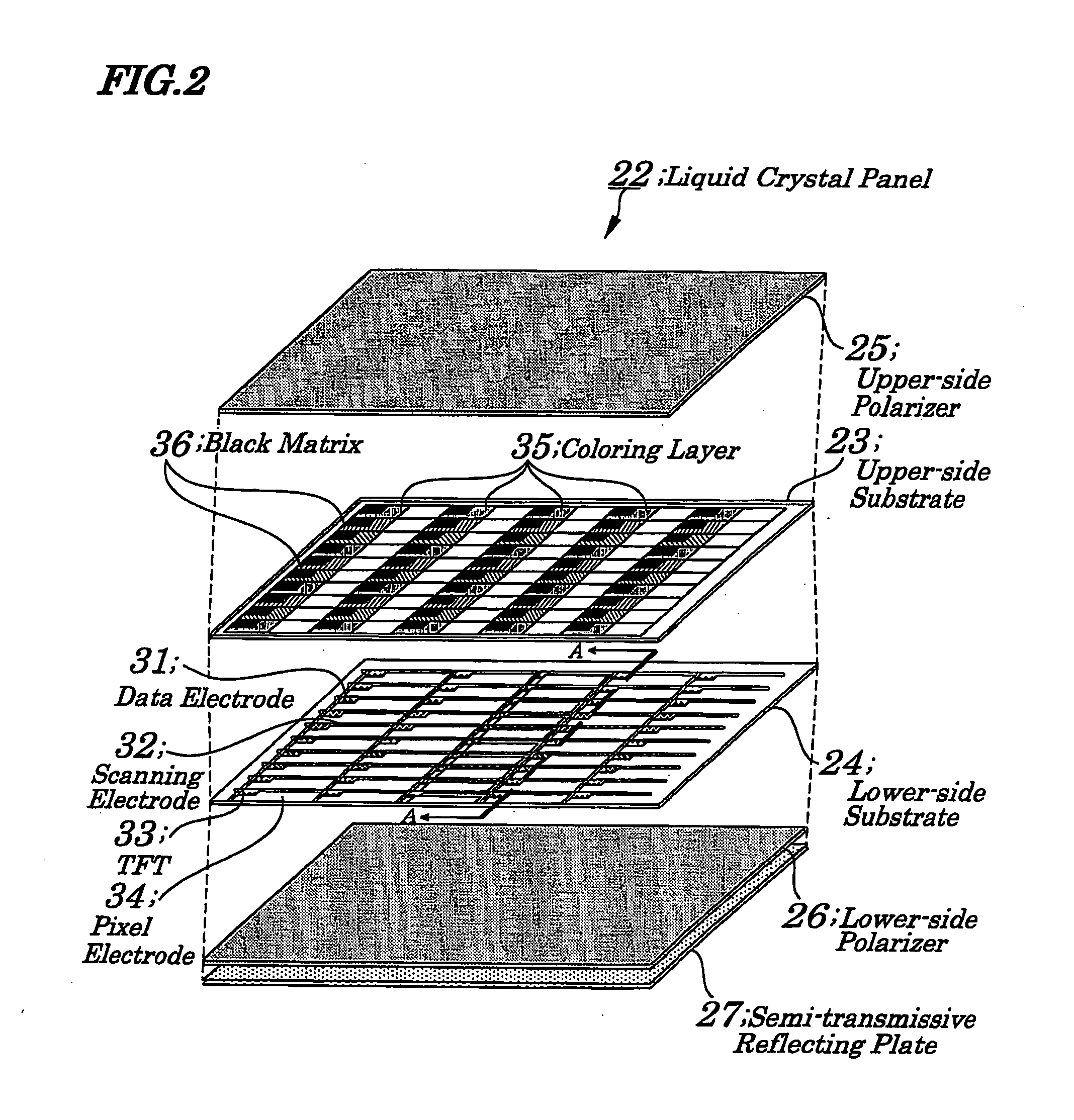Liquid crystal display device and driving method used in same
a technology of liquid crystal display and driving method, which is applied in the direction of static indicating devices, instruments, optics, etc., can solve the problems of over-the-counter liquid crystal display device, difficult to provide a low-priced product, and increase the number of components and fabricating processes, so as to achieve bright display, wide color reproducibility, and simplify the configuration of the liquid crystal display panel.
- Summary
- Abstract
- Description
- Claims
- Application Information
AI Technical Summary
Benefits of technology
Problems solved by technology
Method used
Image
Examples
first embodiment
[0081]FIG. 1 is a perspective view showing configurations of main components making up a liquid crystal display device of a first embodiment of the present invention. The liquid crystal display device of the first embodiment, as shown in FIG. 1, is made up of a backlight 21 and a liquid crystal panel 22. The liquid crystal panel 22 includes an upper-side substrate 23, a lower-side substrate 24, an upper-side polarizer 25, a lower-side polarizer 26, and a semi-transmissive reflecting plate 27. The upper-side substrate 23 and lower-side substrate 24 are made of a transparent substrate such as a glass, a transparent resin, or a like. The upper-side substrate 23 is formed on a visually-recognized side (viewer side) and the lower-side substrate 24 is formed on the backlight 21 side being opposite to the viewer side. The upper-side polarizer 25 is bonded to the viewer side of the upper-side substrate 23 and the lower-side polarizer 26 and the semi-transmissive reflecting plate 27 are bond...
second embodiment
[0100]FIG. 12 is an exploded perspective view showing configurations of main components making up a liquid crystal display device according to a second embodiment of the present invention and same reference numbers are assigned to components having the same function of those shown in FIG. 2 of the first embodiment. A liquid crystal panel 22A of the second embodiment, as shown in FIG. 12, has plurality kinds of coloring layers 35A and an element of black matrix 36A formed on each of TFTs 33 on a lower-side substrate 24 and of a COT (Color Filter on TFT) structure. Configurations other than the above are the same as shown in FIG. 2.
[0101]FIG. 13 is a cross-sectional view of the liquid crystal panel of FIG. 12 taken along a line A-A. As shown in FIG. 13, a liquid crystal layer 37 is sandwiched between the upper-side substrate 23 and lower-side substrate 24 and, on the coloring layer 35A and elements of a black matrix 36A on the lower-side substrate 24 is stacked an over coat 38A in la...
third embodiment
[0104]FIG. 14 is a perspective view showing configurations of main components making up a liquid crystal display device according to the third embodiment of the present invention. In a liquid crystal display panel 22B of the third embodiment, as shown in FIG. 14, the liquid crystal panel 22B is provided which has configurations being different from those of the liquid crystal panel 22 shown in FIG. 1. In the liquid crystal panel 22B, a semi-transmissive reflecting plate 27 formed in the liquid crystal panel 22 of the first embodiment is omitted.
[0105]FIG. 15 is an exploded perspective view showing configurations of main components making up the liquid crystal panel 22B shown in FIG. 14. In the liquid crystal panel 22B, as shown in FIG. 15, between an upper-side polarizer 25 and an upper-side substrate 23 is interposed an upper-side retardation plate 51 and between a lower-side polarizer 26 and a lower-side substrate 24 is interposed a lower-side retardation plate 52.
[0106]FIG. 16 ...
PUM
 Login to View More
Login to View More Abstract
Description
Claims
Application Information
 Login to View More
Login to View More - R&D
- Intellectual Property
- Life Sciences
- Materials
- Tech Scout
- Unparalleled Data Quality
- Higher Quality Content
- 60% Fewer Hallucinations
Browse by: Latest US Patents, China's latest patents, Technical Efficacy Thesaurus, Application Domain, Technology Topic, Popular Technical Reports.
© 2025 PatSnap. All rights reserved.Legal|Privacy policy|Modern Slavery Act Transparency Statement|Sitemap|About US| Contact US: help@patsnap.com



